For me, a big part of the travelling experience is to explore handmade crafts. I am passionate about how things are made, before the era of mass production. Indeed, I believe this is where you can find real quality of craftsmanship and unique items. I love to observe and document how skills and craftsmanship go from one generation to another.
My trip to Sri Lanka gave me a great opportunity to discover what handicrafts in practice and which quality items to seek. Now, it is entirely possible to find poorly executed work but overall, I found the quality of handicrafts in Sri Lanka quite good. Throughout my trip, I sought the handicraft work of local artisans and I found 5 handmade Sri Lanka crafts you must shop for.
Table of Contents
Sri Lanka Crafts: Wood Carving
Wood carving has a long history in Sri Lanka. This long-held tradition is demonstrated within the walls of the Temple of Sacred Tooth in Kandy. You can spend hours studying the intricate details of the Royal Hall, which doesn’t have a single nail in its structure!
Wood carving objects are amongst things to buy in Sri Lanka: wall hangings, figurines, sculptures, gift boxes and other household items.
I found this workshop in Kandy where they created all sorts of objects, big or small. Some of them were nice Sri Lanka souvenirs.
Sri Lanka Crafts: Masks
Masks are deeply connected to healing rituals and can be a good thing to buy in Sri Lanka. Known as “Devil Dances”, the drama-performances tell an elaborate story of fighting diseases brought about by “yakkas” or devils.
Masks are a facial decorative wear in Sri Lankan dancing. The performance-dances using masks mean to cure diseases and ward off evil spirits.
Sri Lanka craft artists use Kaduru, a light wood and design the masks into various characters. They are not dissimilar to Balinese masks and are a commanding presence.
Sri Lanka Crafts: Batik
Originally from Indonesia, the art of making batik was introduced to Sri Lanka by the Dutch. There are numerous factories and small workshops around Sri Lanka, which produce large quantities of batik clothes, decorative homewares and pictures.
Batik is a time-consuming process which consists of applying wax to non-dye areas. After each dyeing, you need to set the colour in the fabric. You wash out the old wax and apply new wax for the next dyeing.
With this time-consuming process, the number of colours is an indicator of how much work was required. The more colours there are, the more time it took!
Batik is probably on top of my list for Sri Lanka crafts!
Sri Lanka Crafts: Gems
Sri Lanka is famed for the high quality of its precious and semi-precious gems. There is excellent craftsmanship in cutting and designing modern jewellery. Coupled with modern technology, this means you can get beautiful jewellery in Sri Lanka. There are 2 jewellery traditions: Galle specialises on cutting precious stones and you can find intricate metal work, including silver, in Kandy.
There are many different types of stones in Sri Lanka including Alexandrite, Amethyst, Aquamarine, Garnet, Moonstone, Tourmaline, Topaz, Zircon, Quartz, Sapphire and Ruby.
Most of the gem extraction sites are around Ratnapura, however, precious gems and jewellery are available for sale in all the tourist centres. Now, it can be tricky to pick out good operators from shoddy ones, unless you are knowledgeable about gems yourself. The Sri Lankan government has a registry of accredited sellers to help you choose.
I bought some jewellery at a place called Isiri in Kandy. There are a fully operational lapidary studio and a gem museum, so you can get an understanding of the process from beginning to end. Not the cheapest of Sri Lanka crafts but you will keep it forever!
Buy Carefully
Of course, there is a strong commercial push and they are more than happy to show off their best sapphires. These can be very expensive and I would recommend sticking to semi-precious stones. I also had a sapphire ring redesigned and they did a very good job. I don’t know much about lapidary or buying gems, nor do I have a big budget. So I was always going to remain cautious but I am now very happy with the blue topaz ring I bought and the remodelled sapphire ring my parents bought in Sri Lanka some forty years ago. The semi-precious stones, such as topaz, amethyst or aquamarine are quite affordable and not as much a risk as the sapphires or rubies.
Sri Lanka Crafts: Lace Making
Initially a pastime for Dutch women, lacemaking is now a household industry, mostly on the South Western Coast, around Galle and Weligama. It’s fascinating to see women handle the lace making tools to create intricate patterns.
Lace decorates garments, curtains, table spreads and various homewares.
If you are spending some time in Kandy, there are other things to do, including visiting the Peradeniya Botanical Gardens. If you are touring Sri Lanka, I also recommend visiting a spice garden or a tea factory, a different kind of handmade experience but equally fascinating!
Related Posts
The Art of Batik
Sri Lanka
Spice Gardens
Kandy Sri Lanka
Geragama Tea Factory
Kandy Sri Lanka
Of course, there are many other handicrafts in Sri Lanka to choose from in your shopping endeavours. Do you have a shopping experience in Sri Lanka you want to share?
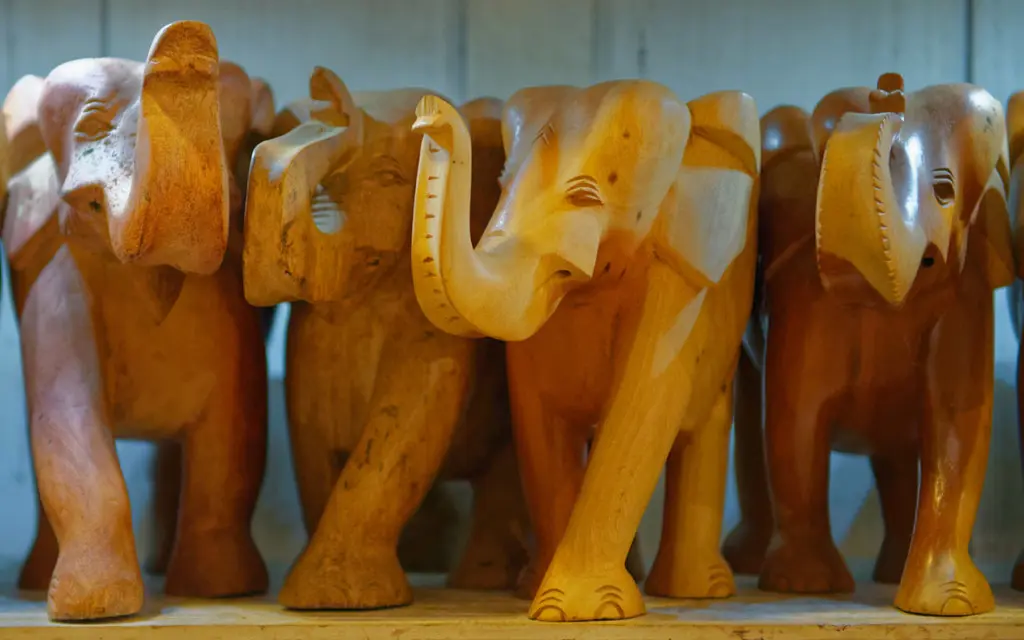
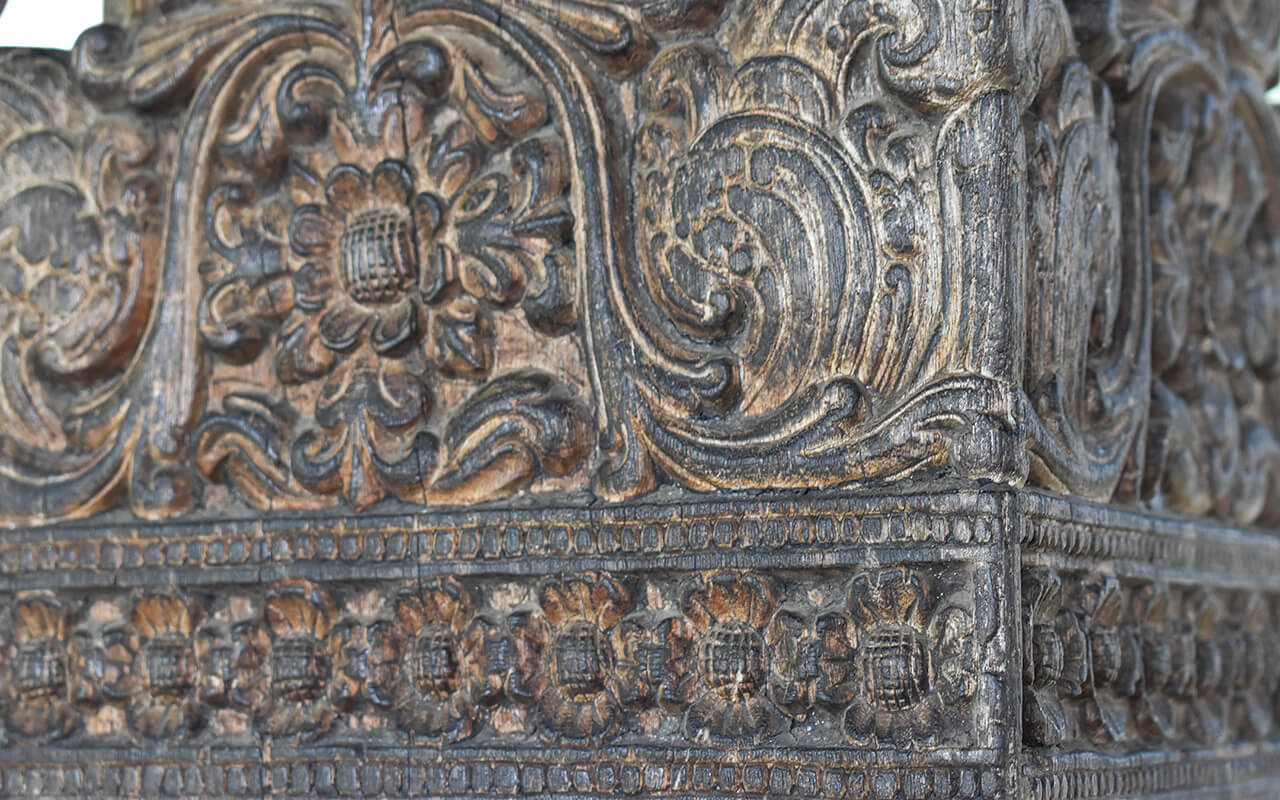
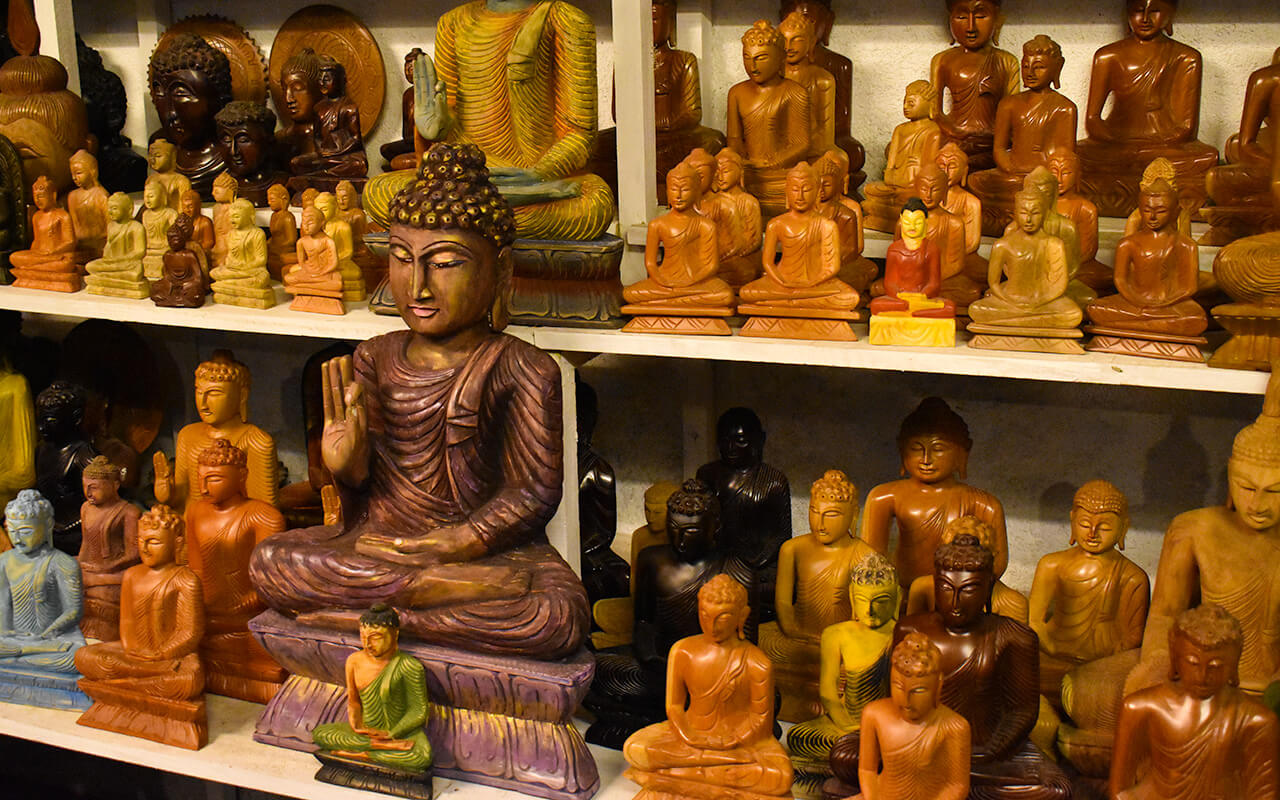
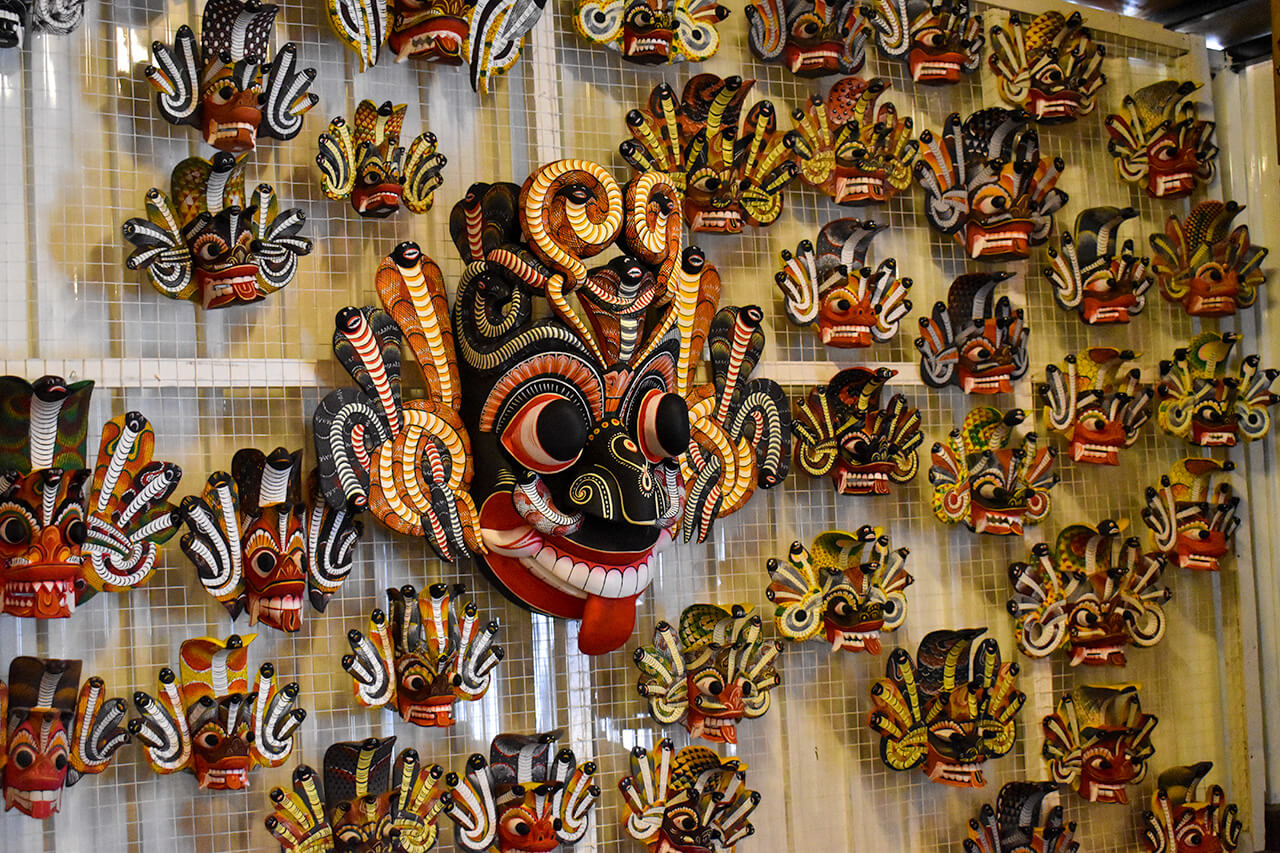

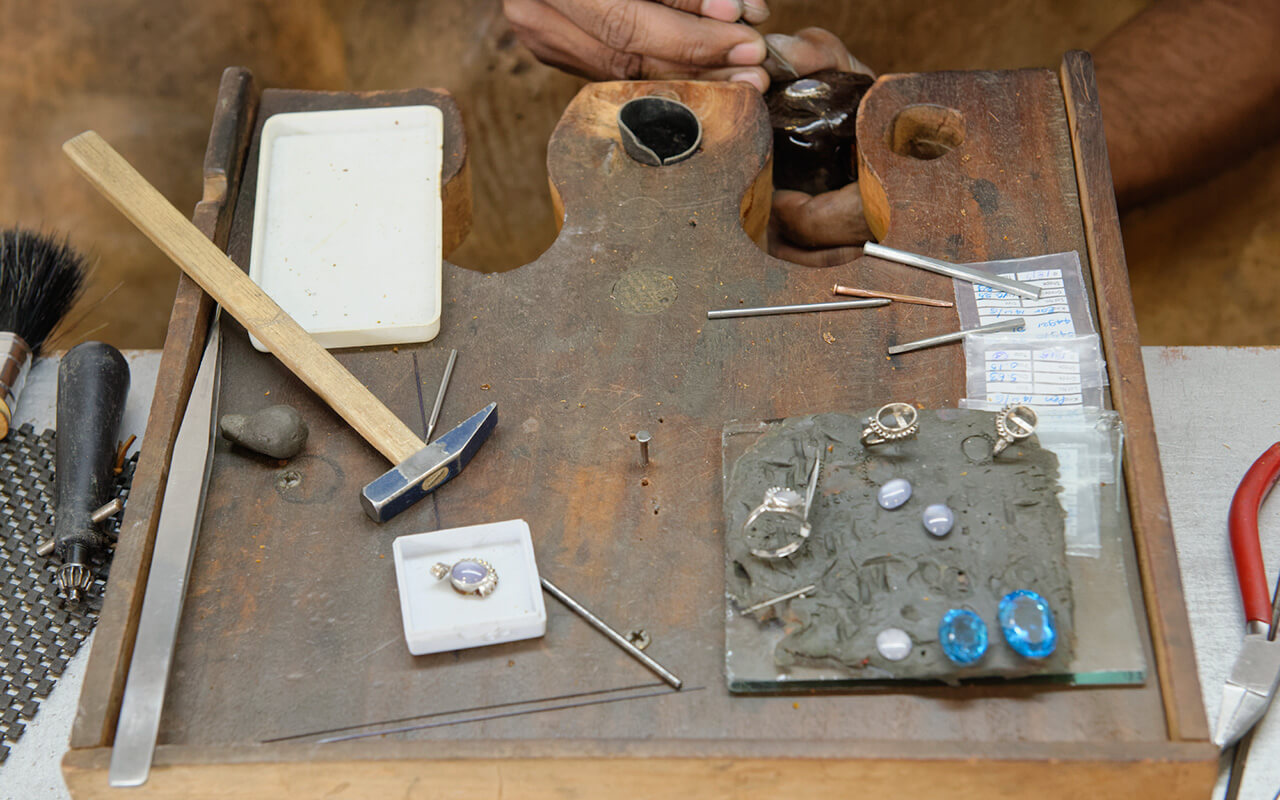

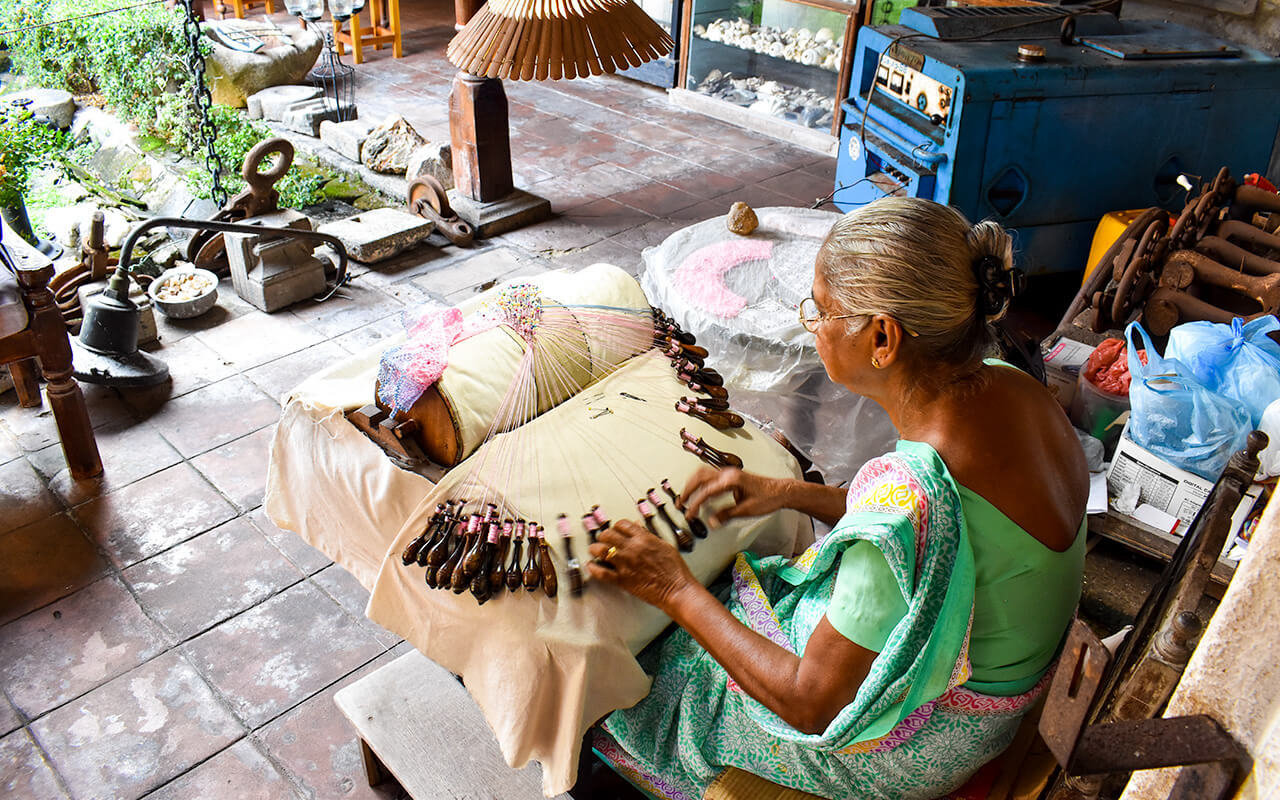
These are so neat! I particularly liked the batik and the lace. Very talented people!
Thanks Tracy, I visited a lace making school in Galle and it was very interesting, it’s such an intricate art!
I have heard so much about this beautiful place. I love the Batik, they are so unique.
Thanks, I bought some batik place mats and I use them everyday!
I love the gems, they’re so beautiful!
Those are some lovely items, but I did have one question. During my time in Guatemala, I spent a lot of time at markets and it was very clear that those which were aimed at tourists all carried the same mass produced items. I later learned the arrive in bulk from Chinese factories. How do you assess if a product is locally produced or not?
Hi Monica, this is a very good question. The places I visited included the manufacturing, so it was possible to see where things were made. Sri Lanka has a government-owned tourist shop chain called Laksala and it is possible that items are made in China but manufacturing is pretty cheap there so I doubt it. When it comes to gems, the industry is well protected by government policy so if you buy in reputable shops, you can be safe that the product is local.
In general, it’s hard to be 100% sure but if a shop is attached to a workshop, you’ll probably be safe.
They are so beautiful!
Thanks, my list doesn’t include all the handicrafts but it’s probably the most important ones.
Love this! I always Google the local crafts of the city/country I’m visiting 🙂
Hi Sofia, using google as an initial guide is a great idea! I always like to explore the handmade experiences when I visit a new place!